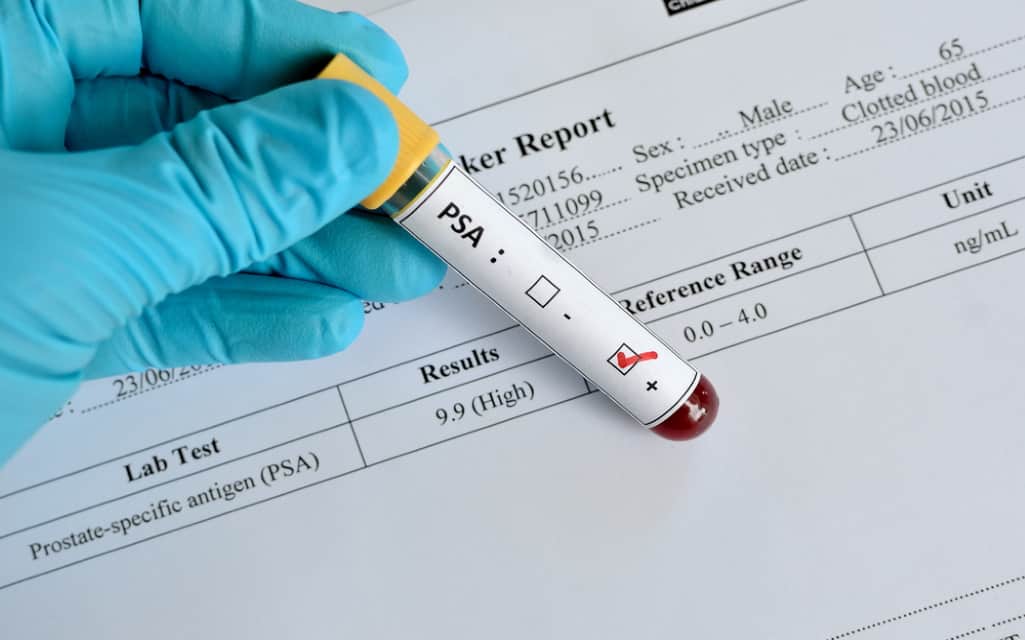Maintaining good prostate health is essential for any man above the age of 25, and there are several tests that one can take to determine if their prostate health is still at optimum levels.
A Prostate-Specific Antigen (PSA) blood test is one of these tests, and high levels can determine something wrong with a man’s prostate.
In this article, we take a look at the specific level of PSA for men 60 years old and above.
What is a PSA Test?
Prostate-Specific Antigen blood tests are done to check for the levels of PSA produced by the prostate. A high PSA score could indicate a cancerous formation, enlargement of the prostate, or prostatitis. The test is done by drawing blood, and it doesn’t require any particular actions beforehand, such as fasting.
A PSA test can be used to determine if further tests are needed if a risk of cancer is suspected. It is also advised that a yearly PSA be done as part of a prostate check-up.
Men’s prostates grow larger as they get older, and this is why it is essential to maintain good prostate health by adjusting your lifestyle and taking supplements that can help, such as ProstaGenix.

What is the Normal PSA Score?
There is no real cutoff point between normal and abnormal levels of PSA in someone’s bloodstream. However, there are guidelines that you can take note of:
- Safe levels are anywhere between 0 and 2.5 ng/ml, and even if it hits 4 ng/ml, it could still be considered safe for most people.
- At 4 to10 ng/ml, it can be considered an area of concern, with more specific tests that have to be done because there is a risk of cancer.
- Above 10 ng/ml results are alarming because it is said that there is a 50 percent chance that there could be prostate cancer.
The average level could be anywhere between 4.0 ng/ml, and no dangers are detected because these are the levels that are still determined safe. There is an ongoing debate in deciding what is normal when it comes to these levels.Regardless of the man’s age, it safe to assume that anything below the 4.0 ng/ml should be deemed safe.
Age-Adjusted Levels of PSA
The younger the man is, the lower the level of PSA. Here are what can be considered as reasonably normal PSA levels for men relative to their ages:
- 40 to 50 years old: 0 to 2.5
- 50 to 60 years old: 2.5 to 3.5
- 60 to 70 years old: 3.5 to 4.5
- 70 to 80 years old: 4.5 and 5.5
However, ethnicity and history of prostate cancer in the family also plays a role in the levels of PSA and should also be taken into account when testing for PSA levels. In order to make a better determination of the PSA reading, it is vital to take note of the PSA velocity for over a year; experts say that it should be less than the 0.75 ng/ml. This means an increase in the level of PSA within a few years would indicate the likelihood of something wrong with a man’s prostate.
Should I be Alarmed With a High PSA Score?
A high PSA score does not necessarily mean that you have cancer developing in your prostate; a high PSA score could just mean an inflamed prostate, for instance. Men with prostate cancer and those with inflamed prostates may show high PSA scores.
The PSA test has to be used in conjunction with other tests to make sure that the results can accurately determine what is wrong with the prostate. In fact, the PSA test is not the only standard tool used as a first method to check for cancer. It is also used in combination with a digital rectal exam in most cases. PSA testing is also reported to have a high rate of false positives, which means that combining it with other tests is necessary in order to get more accurate readings.
Conclusion
Relying on PSA scores alone is not enough to note if a person has either prostate cancer or other prostate issues, because there is a high number of false positives using the test alone. It should be used in conjunction with other tests to diagnose patients’ conditions accurately.
It is safe to assume that below the level of 4.0 ng/ml at a lower velocity of change should indicate a safe prostate. It is also agreed that 3.5 to 3.5 ng/ml should still be healthy at the age of 60. However, it is always advisable for men to sustain good prostate health, maintain a healthy diet, and make sure that they get regular check-ups as they get older.



